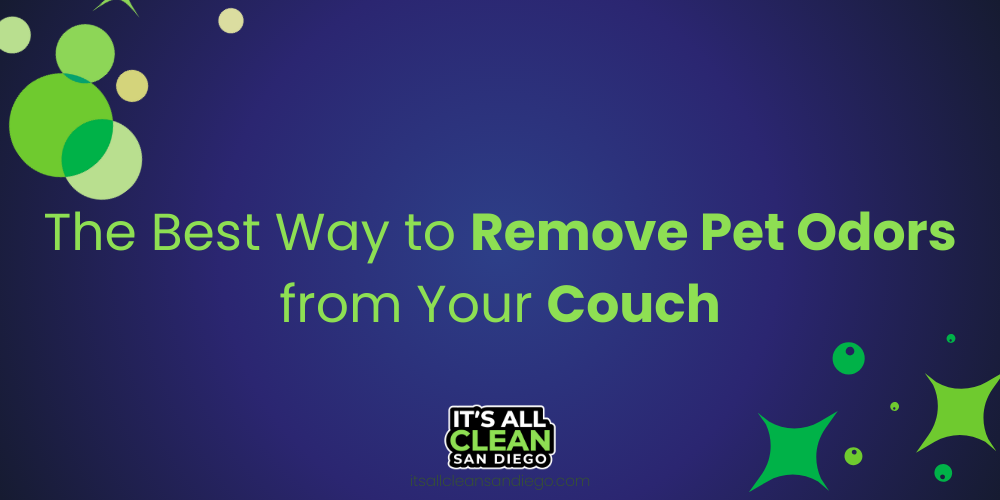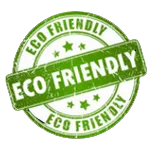If you haven't washed your upholstery for very long and are now finally looking into it, our article will help you out a great deal. In this article, we have emphasized the importance of making upholstery cleaners on your own at home. Although you might feel like making it will be costly, we are here to prove you otherwise. If you still feel like doing this is hard work, our company 'It's all clean San Diego' can provide you with affordable and quick services.
Basics before you start
Before starting, you need to understand the fiber content of the material and how the manufacturer thinks you should wash it. This would be best if you want to ensure that the fabric stays intact for very long, as some fabrics get ruined when cleaned with water-based products. Here are a couple of codes mentioned on fabrics and what they mean:
Code W
The most accessible fabrics to clean, code W stands for water-based cleaner. This means that you can use your water-based solvents to spot clean the material. Be careful not to over-wet it, in any case!
Code S
These fabrics can only be cleaned by solvents which means you can only dry-clean them. You can remove stains by using water-free cleaners and nothing else. Try to keep these solvents away from any open flames.
Code W/S
As you might've already suspected, this code denotes that your fabric can be cleaned using either dry solvents or wet methods. The code is pretty uncommon, so leaving it with a professional would be your best bet, but go ahead if you think you can work with it. Just make sure to pretest accordingly.
Code X
This means that the piece of upholstered furniture cannot be either safely wet or dry cleaned. The only way it can be washed is by carefully vacuuming it or brushing it with a soft-bristled brush. Check with us at 'It's all clean San Diego' to learn more about cleaning this, or leave it up to us, and we'll get the job done!
Making upholstery cleaners at home
Different upholstery cleaners are used for different materials. Many people do not realize this and use just one upholstery cleaner, which damages the furniture. Therefore, we have combined a list of solvents that can be used to clean your furniture easily and quickly in a harmless way.
1 -For fabric and faux leather upholstery
The below method works well for cotton, linen, blended fibers like outdoor fabrics, vinyl, and faux leather upholstery.
Using distilled white vinegar and liquid soap
You can begin on this cleaner by mixing one-half cup of distilled white vinegar and one teaspoon of liquid soap with one cup of warm water. If the stains are nasty, you can also add a bit of baking soda to the solution. Pour this into a spray bottle or combine it in a large bowl.
Then pour the solution little by little on the top of the furniture and rub gently in a circular motion using a microfiber cloth. In the end, dampen the cloth and rinse the fabric. Let it air dry, and voila! You're done.
2 - For microfiber and synthetic upholstery
Although multiple synthetic fibers can be cleaned with water-based cleaners, many cannot be cleaned with these. This is why it is essential to check for code tags on these materials.
For any synthetic fiber upholstery that has either a W or a W/S tag, you can use suds to scrub the dirt off. However, if the tag is an S, you will have to use the isopropyl cleaning method.
Scrubbing with suds
To make this, you will have to add one-fourth cup of dishwashing liquid to four cups of warm water. Use either your hand or an electric mixer to whisk this now. Whisk, whisk, and whisk some more till
you've created a lot of soapy suds.
One piece of equipment that you will need during this is a soft-bristled brush. Dip the brush in the soapy suds but make sure not to dip it into the water entirely. Start scrubbing from the top of the furniture item and work your way down so that the cleaned parts do not get affected by the dirt.
You should also make sure to rinse the brush and dry it before each use. Wipe down the area with a damp microfiber cloth and allow it to air dry. All you need to do now is use an upholstery brush to fluff up the fibers just as they were before.
The isopropyl alcohol cleaning method
Preparing a cleaning solution for the S tag starts from rubbing alcohol and ends at rubbing alcohol. Pour two cups of isopropyl alcohol into a spraying bottle and label it so that you do not mix it up.
Just like the rest, lightly spritz the alcohol on the fabric. Use a soft-bristled brush to scrub off the dirt and soil while the cloth is still damp. Repeatedly rinse the brush with plain water and let it dry by shaking it to fasten the process and continue the same activity.
Let the upholstery air-dry and vacuum it to lift all the fibers.
3. For leather upholstery
People often forget that it is tough to maintain leather upholstery as it needs to be deeply cleaned and conditioned from the very start. Although you can use this solution mentioned below, you should not clean natural suede leather upholstery by yourself at home.
You should also refer to professionals like us at 'It's all clean San Diego' for best results.
Using olive oil and white vinegar
Add one-half cup of olive oil and one-fourth cup of distilled white vinegar. Shake the bottle well to combine all the ingredients.
However, the shaking doesn't stop here. You will have to do this before every use. All that's left to do is for you to lightly spray the solution onto the leather and wipe it down with a microfiber to leave it looking new.
Buff the cleaned area with a dry cloth, and that's it! Your upholstery will be left soft and supple.
- All rights reserved -
It's All Clean San Diego © 2021








Our promise to you!
If we don’t meet or exceed your expectations, you are guaranteed to get your money back. Our commitment is to meet the highest standards in the industry that leads us to lifelong customers. Our philosophy is quality work and professionalism go hand-in-hand and these two factors add up to consistent customer satisfaction.
Contact Us Now
© 2024 All Rights Reserved - It's All Clean San Diego




